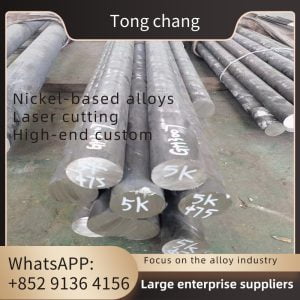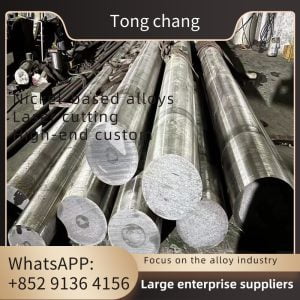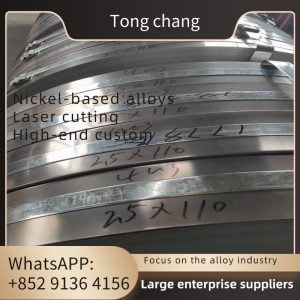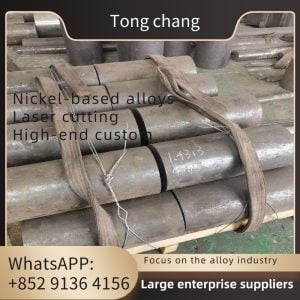| Product Name: | Serrated Finned Tube | Materical: | Any Material Combination That Can Be Arc Welded |
|---|---|---|---|
| Weld Process: | GMAW | Tube Size: | 1.00″ To 12.75″ Outside Diameter |
| Fin Height: | 0.375″ To 1.25″ | Fin Pitch: | 1 To 7 Fins Per Inch |
| Fin Thickness: | 20ga (.035″) To 16ga (.060″) | Fin Segment Width: | 5/32″ Or 5/16″ |
| Application: | Heat Exchanger, Boiler, Natural Gas Treatment, Etc. | ||
| High Light: | Extruded Finned Tube, Heat Exchanger Fin Tube | ||
ASTM A312 TP347 SS Serrated Finned Tube HFW Fin Tube for Heat Exchanger Boiler Economizer
Serrated finned tubes, also known as HFW (High Frequency Welded) fin tubes, are heat exchanger tubes that have serrated/rippled fins on the outside surface. These fins increase the heat transfer efficiency of the tube by creating turbulence in the fluid flow, which promotes better heat transfer from the tube wall to the surrounding medium.
HFW fin tubes are manufactured using a high-frequency electric resistance welding process. This process involves forming and welding the fins onto the tube surface using an electric current. The serrated shape of the fins provides a larger surface area for heat exchange and improves overall heat transfer performance.
Some commonly used materials for serrated finned tubes include:
Carbon Steel: Carbon steel is a widely used material due to its high strength and low cost. It offers good resistance to corrosion and can withstand high temperatures.
Stainless Steel: Stainless steel is often chosen for its excellent corrosion resistance properties. It is suitable for applications where the tube is exposed to corrosive environments or high temperatures.
Copper and Copper Alloys: Copper and copper alloys such as brass are preferred for their high thermal conductivity and resistance to corrosion. These materials are commonly used in heat exchangers and other applications that require efficient heat transfer.
Aluminum and Aluminum Alloys: Aluminum and aluminum alloys are lightweight and offer good thermal conductivity. They are commonly used in applications that require heat dissipation, such as air conditioning and refrigeration.
The specific material chosen for serrated finned tubes depends on factors such as the operating conditions, thermal requirements, and the surrounding environment. It is best to consult with a specialist or manufacturer to determine the most suitable material for a specific application.
| TONG CHUANG Group's Welded Helical Serrated Finned Tubes | |
| Weld Process | GMAW |
| Tube/Pipe Size | 1.00″ to 12.75″ outside diameter |
| Fin Height | 0.375″ to 1.25″ |
| Fin Segment Width | 5/32″ or 5/16″ |
| Fin Thickness | 20ga (.035″) to 16ga (.060″) |
| Fin Pitch | 1 to 7 fins per inch |
| Materials | Any material combination that can be arc welded |
| Tube Length | No practical limit |
What's the difference between welded solid finned tubes and welded serrated finned tubes?
The main difference between them is in the design of the fins.
1. Welded solid finned tubes have fins that are solid and continuous along the length of the tube. These fins provide a large surface area for heat transfer, which can improve the efficiency of the heat exchanger. However, the solid fins can also create a higher pressure drop compared to serrated fins.
2. welded serrated finned tubes have fins that are serrated or notched along their length. These serrations help to disrupt the boundary layer and improve heat transfer efficiency. Serrated fins can also provide a lower pressure drop compared to solid fins.
Why people choose serrated finned tubes?
Enhanced heat transfer: The serrations on the fins increase the surface area of the tube, allowing for more efficient heat transfer. This can be particularly advantageous in applications where heat exchange needs to be maximized.
Improved fluid dynamics: The serrations help to disrupt the fluid flow and promote better mixing, resulting in improved heat transfer efficiency. This can be beneficial in applications where there is low fluid velocity or for fluids with poor heat transfer properties.
Condensation prevention: The serrated fins help to break up laminar flow, reducing the likelihood of condensation forming on the surface of the tube. This can be important in applications where condensation can lead to corrosion or other operational issues.
Reduced fouling: The serrated profile of the fins can help to minimize fouling caused by the buildup of dirt, dust, or other particles on the surface of the tube. This can result in improved performance and efficiency over time, as maintenance and cleaning needs are reduced.
Increased structural strength: The serrations provide additional rigidity and strength to the fin, making it more resistant to damage or deformation. This can be advantageous in applications with high pressure or mechanical stresses.
Quick quotation
Dimensions: the outer diameter (OD) and the wall thickness of the tubes. Additionally, specify the length of the tubes required.
Material: Specify the material required for the tubes, such as carbon steel, stainless steel, or any other specific alloy.
Fin Specifications: MaterialState the fin height (or fin depth), fin thickness, and the density of serrations required. The fin height refers to the distance from the root to the tip of the fins, while fin thickness is the actual thickness of the fins. The density of serrations refers to the number of serrated points per unit length of the fin surface.
Tube Quantity: Specify the number of serrated fin tubes required for your application.
Applications
The common application fields are:
1. Heat exchangers units for power plant(electric, nuclear, thermal and geothermal power plants);
2. High corrosive systems (condensers, evaporators, sea water desalinations, fertilizing, urea systems, ammonia, gas, corrosive acids);
3. The petroleum, chemical and petrochemical industries;
4. The food processing and refrigeration industries;
5. Natural gas treatment;







